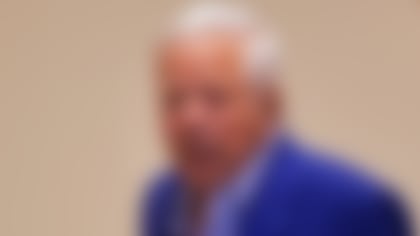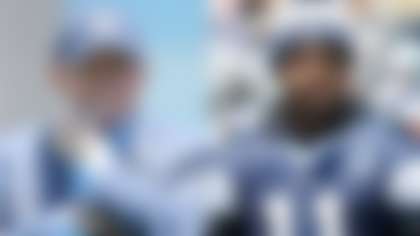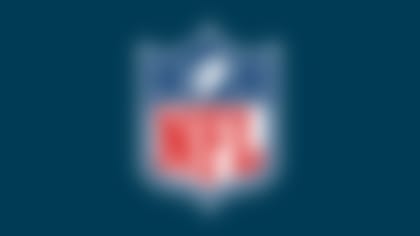FORT LAUDERDALE, Fla. -- Players play and coaches coach! There is such balance on most rosters that coaching can be a competitive advantage. Of course, both the Saints and Colts have excellent players, as each team is led by one of the best quarterbacks in the NFL. Still, without solid game plans and quality coaching, these teams would just be a group of players rather than well-oiled machines.
The coach would be the first one to tell you that his assistants, especially the coordinators, do the real coaching and that they should be the focus of any story about coaching in the Super Bowl. Nonetheless, it does start at the top.
The coaches
Rookie coach Jim Caldwell went 14-2 in the regular season and has the Colts in the Super Bowl after two impressive postseason victories. His biggest influence is on offense, where he tweaked the plan of attack ever so slightly, using less of the outside zone run scheme. Caldwell also overhauled the defensive philosophy, seeking a more aggressive style. Picking Larry Coyer as his coordinator was a critical step in changing how the Colts play defense.
Colts' quiet leader
Those who think that all the quiet, unassuming Jim Caldwell did was simply inherit a great team from former coach Tony Dungy are terribly mistaken, writes Vic Carucci. **More ...**
Beyond the philosophical changes, Caldwell led a team that had the second-fewest penalties, which is a great sign his message about being a smart team got through to players. Under Caldwell, the Colts won't beat themselves.
Sean Payton is widely considered a tremendous offensive coach with an attacking style. This season, he clearly emphasized balance, which required more of a commitment to running than in the past. In 2008, the Saints ranked 28th in rushing. They jumped up to sixth this season.
Like Caldwell, Payton also made a decision to change defensive philosophy this season and go to a much more aggressive scheme. Hiring coordinator Gregg Williams has paid big dividends.
The defensive coordinators
Williams runs a 4-3 scheme with multiple pressure calls. His defense only gave up 21.3 points a game in the regular season. He has little tolerance for mental errors and will bench any player, no matter his salary, if he can't execute.
The Saints brought pressure 19 percent of the time on first down in 2008, compared to 45 percent with Williams at the controls this season. With the additional pressure, the sack total on first down went from 10 a year ago to 13. On second down, the pressure calls went from 28 percent to 52 percent, while the sack number jumped from eight to 12 under Williams. On third down, the pressure calls went from 26 percent to 55 percent, but the sack total fell from nine to eight.
Keep in mind, however, sacks are not the only thing Williams wanted to accomplish with his pressure calls. It was clear in speaking with defensive end Will Smith, linebacker Scott Fujita and defensive tackle Sedrick Ellis that they love the attacking style and feel as if the defense is calling plays against the opposing offense.
In a series, the unit could roll through a six-man pressure, followed by a five-man call, then a four-man look and even a three-man attack. While Williams respects Peyton Manning, that doesn't mean he will retreat from attacking the quarterback. His goal will be to disrupt Manning and get him to turn the ball over.
The Saints scored 141 points off turnovers, which tied for tops in the NFL. During the season, Williams' aggressive play-calling led to 26 interceptions and another three in the two playoff victories. To get a sense of just how aggressive Williams' defense can be for 60 minutes, the unit forced 39 turnovers in the regular season and has forced seven more in the playoffs.
Coyer is not as aggressive as Williams, but has implemented major change compared to the defenses Indianapolis has run in the past. With the distinct possibility that Dwight Freeney may not play, there's a real chance Coyer will turn up the heat.
The Colts have increased their pressure calls on first down from 8 percent a year ago to 13 under Coyer, which upped the sack total on the down from eight to 10. On second down, the Colts went from bringing heat 7 percent of the time in 2008 to 25 percent, but the unit's sack production stayed the same (seven each season). The jump in pressure is even more evident on third down, where the pressure calls went from 13 percent to 37, while sacks went for 15 to 16.
For years, opponents expected a four-man rush from the Colts play in and play out with seven guys in zone coverage, usually the Tampa-2 scheme with the middle linebacker holding off the deep middle.
Now you see various looks along with linebacker blitz calls when needed. Coyer will be careful on first down because the Saints are 51 percent run/49 percent pass. He will have a chance to blitz more on third down, when Drew Brees passes 72 percent of the time.
The offensive coordinators
Considering both head coaches have an offensive background, they have influence on everything from the play-calling to the personnel groups in the game. Both teams also have quarterbacks that control a significant part of the play-calling from the line of scrimmage.
Moore, who never gets rattled, brings more than 30 years of NFL experience, and is a tremendous calming influence on the sidelines. Carmichael aids the team in executing Payton's plan, and helps the head coach diagnose what the defense is trying to do. Carmichael worked with Brees in San Diego before coming to New Orleans.
Special teams coaches
Between punts, kickoffs, field goals and extra points, there will be upwards of 30 to 35 special teams plays, which could have a big impact on this game.
Ray Rychleski of the Colts and Greg McMahon of the Saints live in a world of obscurity. That is, unless something goes wrong. Neither team is very good in the return game, and both give up more kickoff and punt return yards than they create. The real red flag may be the Saints' league-worst punt coverage, which gave up 14.3 yards a return in the regular season. There is hidden yardage for both teams to go after in this game, and it may surface more as to where drives start than anywhere else.
As for managing the kicking game, Rychleski has the comfort of two veterans with Super Bowl experience in Matt Stover and Adam Vinatieri, while McMahon has a young kicker in Garrett Hartley, who is in his first Super Bowl.



